How to Incorporate Area Rugs with Your Flooring
Have you ever had this happen?
You find an area rug online or in a store. You fall in love with its bright colors and bold patterns. You measure carefully and decide on the right size. You place your order and have it delivered. Then you stretch it into place … and hate it.
It doesn’t look right. It doesn’t fit into your space the way you imagined. Is it the area rug? Is it your decor skills? How could you have got it wrong?
For some homeowners, that scenario plays out every time they go shopping for new decor. That fear holds them back as they shop for area rugs. They push aside finalizing a decision, leaving their floors bare, thinking: someday …
Is that you?
We get it. The right area rug can cost a lot of money.
But you’ve seen it in friends’ homes. You’ve seen it in your favorite magazines. You know the right rug would do wonders for your home. But where do you start?
What Is An Area Rug?
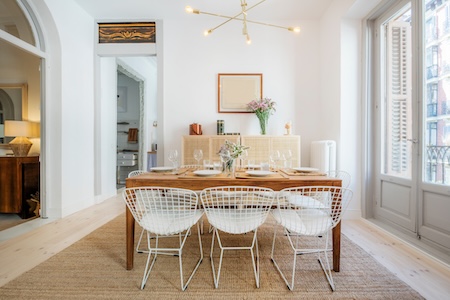 It seems obvious, but sometimes reading the definition can give you a better understanding of what to expect.
It seems obvious, but sometimes reading the definition can give you a better understanding of what to expect.
An area rug is meant to cover an area of the floor. Unlike wall-to-wall carpeting, area rugs do not extend from baseboard to baseboard, but instead are designed to add aesthetic appeal, comfort, and warmth to a designated area.
Rugs are part of the decor. Their purpose is to anchor furniture into the overall aesthetics of the room. They come in various shapes, sizes, materials, and designs, making them versatile for different interior styles and functions.
Do’s of Incorporating Area Rugs Into Your Home Design
Do Choose the Right Size
While there isn’t a “right or wrong” way to size an area rug into your room, there are general guidelines. Measure your room and furniture layout before purchasing a rug. In the living room, the rug should ideally be large enough to fit under all the furniture or at least the front legs of major pieces like the sofa and chairs. In dining rooms, the rug should extend at least 24 inches beyond the table to allow chairs to move in and out smoothly without falling off the edge. These are guidelines only – if you have something else in mind, go for it.
Do Consider the Room’s Function
Think about how the room is used and choose a rug that suits that function. For high-traffic areas such as hallways or entryways, opt for rugs made from durable materials like wool or synthetic fibers that can withstand wear and tear. In cozy spaces like bedrooms, a soft, plush rug can add comfort and warmth. In dining areas, consider a flat-weave or low-pile rug that’s easy to clean and won’t trap crumbs.
Do Play with Patterns and Colors
This is where you can have fun! Use the rug to enhance your room’s color scheme. If your room has a neutral palette, a bold, patterned rug can become a statement piece. Conversely, if your room is already vibrant, a solid or subtly patterned rug can balance the look. Consider the mood you want to create—cool colors like blues and greens can be calming, while warm colors like reds and yellows can energize the space.
Do Layer Rugs
Who says one rug is all you need? Layering rugs can add depth and texture to your design. Start with a large, neutral base rug and layer a smaller, more colorful or patterned rug on top. This technique is particularly useful in large, open spaces where you want to create distinct areas. For example, in a large living room, a base rug can define the main seating area, while a layered rug can highlight a smaller conversation nook.
Do Use Rug Pads
It’s not just the rug you’re investing in; a high-quality rug pad to place underneath your area rug adds more life to your rug. Rug pads serve multiple purposes:
- They prevent the rug from slipping, which is especially important in high-traffic areas or homes with children and pets.
- They provide extra cushioning, making the rug more comfortable to walk on.
- They protect your flooring from scratches and wear.
- Rug pads can also extend the life of your rug by reducing friction with the floor.
Don’ts of Incorporating Area Rugs Into Your Home Design
Don’t Choose a Rug That’s Too Small
A rug that’s too small can make your room feel disjointed and undersized. In a living room, a small rug that only sits under the coffee table can leave the space looking unbalanced. Ideally, your rug should be large enough to extend under the front legs of your seating furniture, creating a cohesive look. In bedrooms, aim for a rug that extends at least 24 inches beyond the bed on all sides to ensure a comfortable step when you get out of bed.
Don’t Ignore Maintenance
Each rug material comes with different care requirements. For instance, natural fibers like wool and cotton are durable but may need professional cleaning periodically, while synthetic fibers can often be cleaned at home but may not last as long. Consider your lifestyle—if you have pets or young children, choose a rug that’s stain-resistant and easy to clean. Regular vacuuming and occasional deep cleaning can help maintain your rug’s appearance and longevity.
Don’t Clash with Existing Decor
Your rug should complement the overall style and color scheme of your room. If your decor features bold patterns and vibrant colors, opt for a more subdued rug that won’t compete for attention. If you have a room with neutral or minimalistic decor, it can benefit from a rug with a striking pattern or color. Ensure that the rug ties together the elements in the room, from furniture and curtains to wall art and accessories. Of course, this is based on your personality. Only you can decide if an area rug is right for you. Trust your gut instincts; they’ll lead you to the right choice.
Don’t Forget About the Room’s Proportions
An oversized rug can overwhelm a small room, making it look cluttered, while a too-small rug can make the room feel disjointed. Ensure your rug fits the scale of your room and furniture layout. In large rooms, you might need a bigger rug or even multiple rugs to define different areas. Use painter’s tape to outline the rug’s dimensions on the floor before purchasing to visualize how it will fit within the space.
Don’t Place All Furniture Off the Rug
In seating areas, placing only the coffee table on the rug can create a floating effect that disrupts the room’s flow. Ensure at least the front legs of all seating furniture are on the rug to anchor the space. In dining areas, the rug should be large enough so that chairs remain on the rug even when pulled out. This not only looks better but also prevents chairs from catching on the rug edges and causing tripping hazards.
Is It Time To Purchase a New Area Rug?
What’s your design preferences? What size do you need? Whatever room you’re hoping to outfit, we have an area rug for you. Stop by today to see our complete selection. We’ll help you find the right one for you.

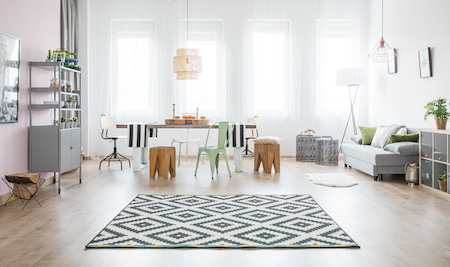 Living here in Colorado, you have an added problem – sunlight. You may love the view through your big picture window, but your hardwood floors aren’t as happy. Those long hours of sunshine can cause the color to fade. Area rugs help prevent fading caused by exposure to sunlight.
Living here in Colorado, you have an added problem – sunlight. You may love the view through your big picture window, but your hardwood floors aren’t as happy. Those long hours of sunshine can cause the color to fade. Area rugs help prevent fading caused by exposure to sunlight.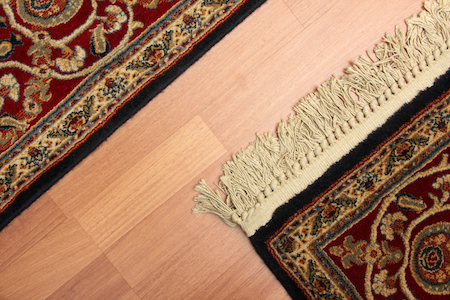 Have a large room you’d prefer to divide into workable spaces? That’s a great reason for introducing an area rug. Place one underneath a dining room table and you have an instant eating nook. Use one underneath a coffee table, surrounded by a couple of chairs, and you have a quaint space perfect for intimate gatherings. If you can dream it, you can do it. Use an area rug as your inspiration.
Have a large room you’d prefer to divide into workable spaces? That’s a great reason for introducing an area rug. Place one underneath a dining room table and you have an instant eating nook. Use one underneath a coffee table, surrounded by a couple of chairs, and you have a quaint space perfect for intimate gatherings. If you can dream it, you can do it. Use an area rug as your inspiration.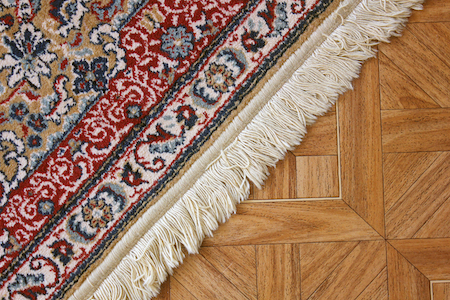 Start with the end in mind. You may fall in love with an area rug, but if it isn’t the right material to suit your needs, you’ll hate it almost from the start.
Start with the end in mind. You may fall in love with an area rug, but if it isn’t the right material to suit your needs, you’ll hate it almost from the start.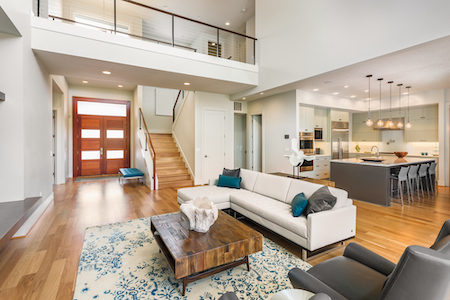 Sisal began making its way into homes in the 1980s, and the design trend has continued ever since. Part of its appeal is it can be used in a casual way in the places you spend a lot of time, or change out the decor, and it instantly takes on a more sophisticated feel.
Sisal began making its way into homes in the 1980s, and the design trend has continued ever since. Part of its appeal is it can be used in a casual way in the places you spend a lot of time, or change out the decor, and it instantly takes on a more sophisticated feel.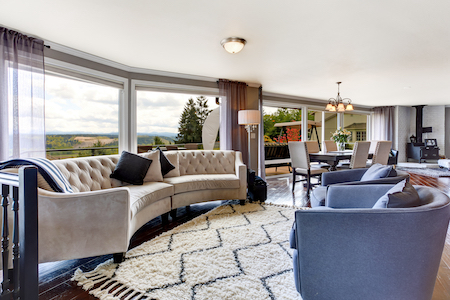 We recommend choosing rug color similarly to selecting furniture and paint color. Darker colors tend to make a room look smaller and cozier, while lighter colors open the space up. If you have neutral furniture, bringing in patterns and bright colors with a rug can add pizzazz. Go neutral if you want a calm, relaxing space.
We recommend choosing rug color similarly to selecting furniture and paint color. Darker colors tend to make a room look smaller and cozier, while lighter colors open the space up. If you have neutral furniture, bringing in patterns and bright colors with a rug can add pizzazz. Go neutral if you want a calm, relaxing space.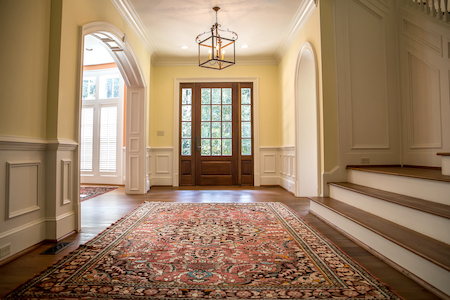 Some of it also comes in knowing your personal style. Do you replace rugs with every new season? Or do you want furnishings that stand the test of time? With cheap rugs, you’ll be replacing them regularly. In short periods of time, they’ll show their wear, start to curl at the edges, and become problematic rather than giving your home value.
Some of it also comes in knowing your personal style. Do you replace rugs with every new season? Or do you want furnishings that stand the test of time? With cheap rugs, you’ll be replacing them regularly. In short periods of time, they’ll show their wear, start to curl at the edges, and become problematic rather than giving your home value.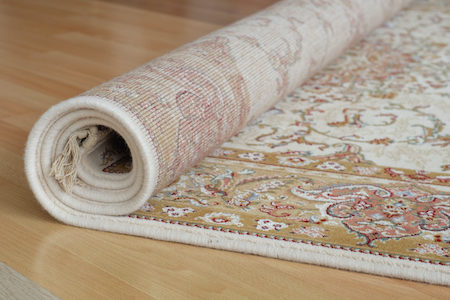 Flip your area rug over and you’ll find the backing is created in different ways. Depending on performance requirements, backing is created from a variety of different fiber options.
Flip your area rug over and you’ll find the backing is created in different ways. Depending on performance requirements, backing is created from a variety of different fiber options.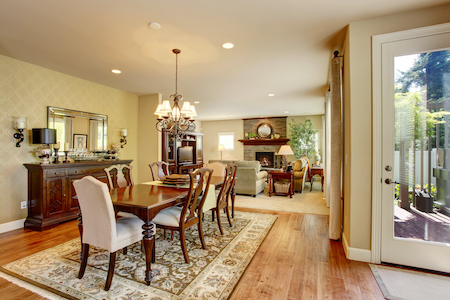 Before you start to shop, it’s a good idea to measure your space and decide where you want your area rug to lie before you start settling in on ideas. You can measure and then do a quick search to find out what is available – will you have to order a custom rug, or will a standard size fit into place?
Before you start to shop, it’s a good idea to measure your space and decide where you want your area rug to lie before you start settling in on ideas. You can measure and then do a quick search to find out what is available – will you have to order a custom rug, or will a standard size fit into place?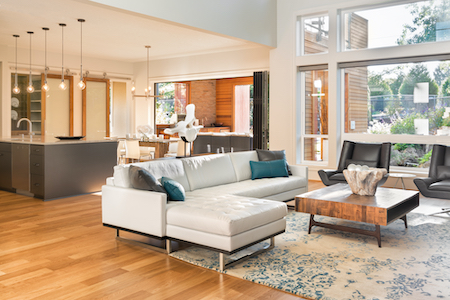 Like sisal, jute is made of natural fibers derived from Jute plants. Jute is grown mainly in Bangladesh and India from a tall, spindly plant that is also used to produce burlap. It comes with a natural light brown hue that can be dyed. But because of the color and texture, the hues will take on a more muted, earthy tone.
Like sisal, jute is made of natural fibers derived from Jute plants. Jute is grown mainly in Bangladesh and India from a tall, spindly plant that is also used to produce burlap. It comes with a natural light brown hue that can be dyed. But because of the color and texture, the hues will take on a more muted, earthy tone.